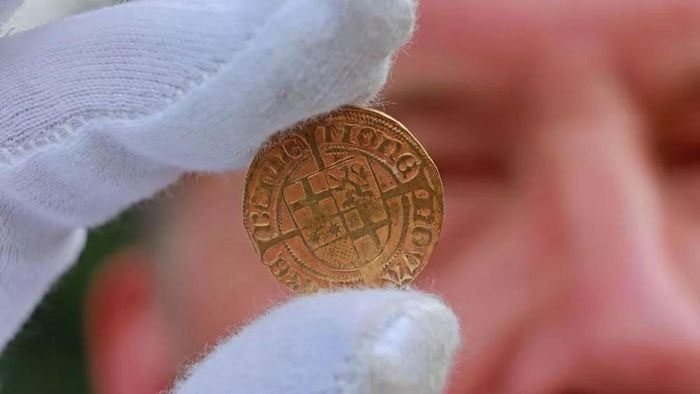Archaeologists in Germany have uncovered a hoard of 500-year-old gold coins buried among the ruins of a medieval monastery.

One of the four gold coins found at a monastery in Germany. (Photo: DPA, Alamy Stock Photo).
Known as Himmelpforten, the Augustinian Hermit Monastery was home to monks since its establishment in 1253 until the 16th century. Archaeologists believe that the four coins were hidden by one of the monks in 1525 during a peasant uprising when farmers stormed the monastery in Wernigerode, a town in central Germany, according to an article from the German newspaper Mitteldeutsche Zeitung.
“These gold coins are of great value and were likely hidden by a monk in a dangerous situation,” said Felix Biermann, the project director and archaeologist from the State Office for Archaeology and Monument Conservation of Saxony-Anhalt, Germany, in an interview with Mitteldeutsche Zeitung.
According to Newsweek, these coins are classified as guilders (guldens), a type of currency used in the Holy Roman Empire, which includes a coin minted in Frankfurt before 1493 during the reign of Holy Roman Emperor Frederick III; another coin minted in Schwabach, near Nuremberg, around 1486 to 1495; and two coins produced by the Archdiocese of Cologne in Bonn around 1480.
In addition to the coins, researchers also discovered a collection of artifacts, including a bronze book hook, porcelain, animal bones, a cavalry spur, and a lead seal used for stamping cloth for trade. All these items provide insight into the extensive trade networks and prosperity of this medieval monastery.


















































